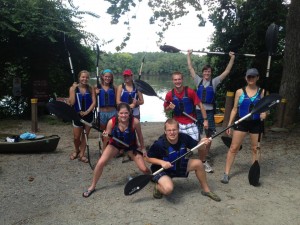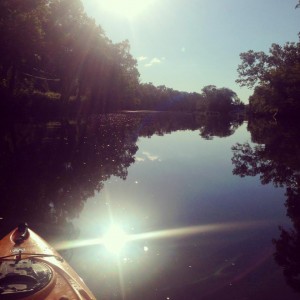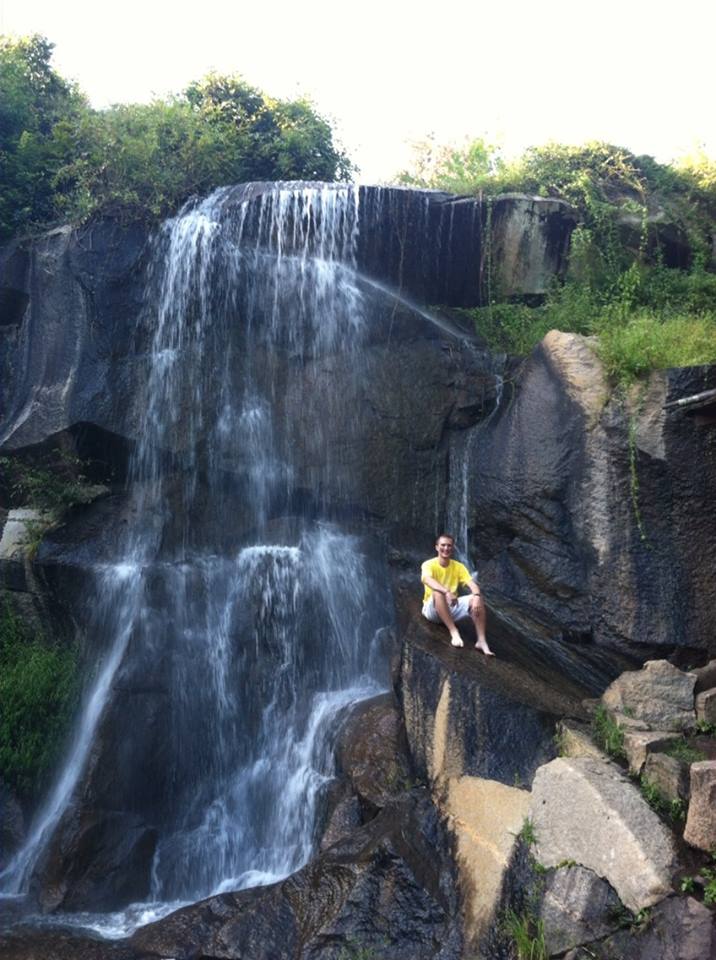It has been five weeks since the start of my sophomore year in at the University of Richmond. Five weeks that feel like they lasted an eternity and, at the same time, seem to have gone by far too quickly. At the culmination of our first full month of school, many of us were visited by our parents for University of Richmond’s family weekend. The perfect opportunity to explain everything I’ve been doing in my classes and exactly why I have the furthest living arrangements possible on campus.
Simply stating that I learn about the James River Watershed raises confused looks from both my parents and younger brother, so I begin to explain what exactly that means. I learn about how everything around me, every animate and inanimate object, effects my life and the lives of everything else around us by means of effecting the path of water. The focus on how intricately everything is connected only makes me marvel at the force of nature, at its power to create such a finely tuned system.
Explaining my recent interactions with the Watershed itself, beginning with the kayaking trip taken so many weeks ago. Floating upon the water, you can see the few fish flitter just beneath the surface. The water seemed so calm, it appeared to be a sheet of reflective glass, almost sturdy enough to walk on. However, at the same time that we trekked up and down the river, the altering hand of humanity was clear as day. We are all brought back to reality with a bang, or rather a train whistle, as a freight train with too many cars to keep track rushes by, just feet from the river. Quite apart from the transportation, there are few fish, birds, or any wildlife (save insects) prevalent in an ecosystem that used to have a thriving diversity of an ecosystem. The natural beauty within the river ecosystem still exists, but is constantly demeaned by human influences.
Barely two weeks later, I experienced Maymont park for the first time of my life… and it blew all of my expectations out of the water. Walking through the gate I saw a beautiful expanse of hills and fields, blissfully unaware of what lay behind them. Upon exploring with fellow Earth Lodger Hilary and our friend Mariah we discovered the vast beauty or Maymont including a coy pond, multitude of trees, a beautiful field of flowers, and a full sized waterfall! Even amongst all this “natural” beauty, the influence of humanity is incredibly present. A good portion of Maymont is human made to be ascetically pleasing and a nice way to go about an enjoy nature. Even in enjoying nature, we feel we must alter it to make it better, as if we know how to improve upon its natural beauty.
Throughout the past five weeks it has become clear how altered our natural habitat has become simply by our existence here. Our readings tell the tale of a time before we overreached our environmental capacity, when we lived among the other inhabitants in pseudo-peace. Now, even our “natural” exhibits have the hand of human engineering within it. So few things are entirely not corrupted by humanity we have begun to believe our creations are natural.
We have not only begun to perceive our attempts at recreating natural beauty as the real deal, but we as a society have become apathetic enough toward nature that most disregard even the fabricated natural beauty. Despite its inauthentic natural nature, Maymont is still a beautiful way to spend a weekend day of sun, and most of the people I know have never even heard of Maymont, and even less have visited its grounds. Even students at the University of Richmond often fail to recognize the sheer beauty that resides in the middle -of our campus: Westhampton Lake (itself a man-made, economical, aesthetic investment). There are few things more beautiful then standing ion the bank, on a clear night, and looking out at the sky reflected perfectly against the water. Do the students acknowledge the beauty? Do they even respect it even a shred? No, they discard cigarette butts and throw University “Green Bikes” into its depths.
The expressed apathy even begins to alter the most natural of beauties in the area. The James becomes polluted from the runoff from poisonous fertilizer used in everyday lawn care. The runoff kills innocent animals whose only crime was being an inhabitant of the river itself. Cleanup efforts are blown off as “a hippie movement” or as “unnecessary”. Due to the exponentially increasing construction of water-impervious surfaces, sediment is carried back to the river without the natural absorption and filtration usually preformed by the healthy soils. Soils absorb a fraction of the rainwater that they used to due largely to human waste and the destruction of natural habitats keeping soils healthy and absorbent. The lack of absorption leads to increased frequency and severity of floods. With no natural barriers left to defend against, and instead of attempting to restore these barriers, we alter the area further with the construction of flood walls. These walls not only destroy the natural habitat further, but if breached serve the opposite purpose than what they constructed for and trap the water within civilization multiplying the damage and destruction.
We are surrounded by beauty, as natural as we are going to find it. We can still appreciate what lies around us, what is left after hundreds of years of our manipulation. We may even be able to restore portions of it to its truly natural state. But to do so, we must escape the apathetic mindset that “it will always be here” because, if we don’t, it won’t be here for long.



